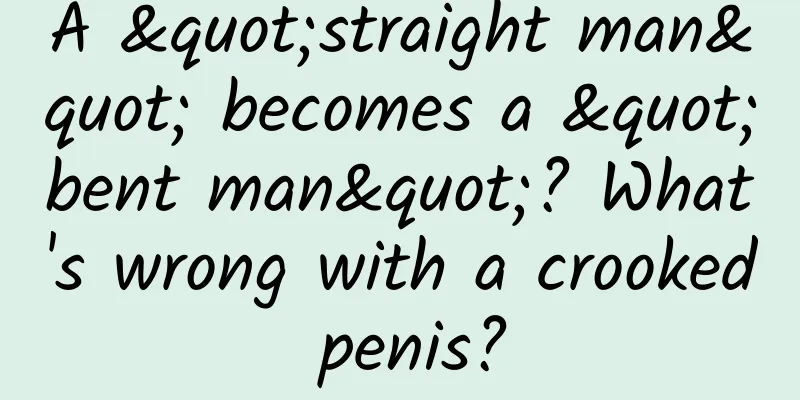One testicle hurts, the other doesn't

|
The testicle refers to a part of the male reproductive organ. With the continuous improvement of living standards in real society, many men are prone to some genital diseases. It is also a common situation that one testicle hurts while the other does not. This may be caused by male diseases. Orchitis can also easily lead to such a situation, which requires detailed examination and treatment. Why does one testicle hurt while the other doesn't? Common causes of testicular pain include: orchitis, epididymitis, hydrocele, prostatitis, varicocele, testicular cyst and trauma. You can go to the hospital for examination according to your own situation and follow the doctor's instructions to treat the symptoms. Pay attention to local hygiene at ordinary times. Categories 1. Chronic nonspecific orchitis Chronic orchitis is mostly caused by incomplete treatment of non-specific acute orchitis. It can also be caused by fungal, spirochetal, or parasitic infections, such as testicular syphilis. Patients with previous testicular trauma may develop granulomatous orchitis. Local or whole-body radioactive isotope phosphorus irradiation of the testicles can also cause orchitis and damage the testicular tissue. 2. Acute nonspecific orchitis Acute non-specific orchitis often occurs in patients with urethritis, cystitis, prostatitis, after prostatectomy and with long-term indwelling catheters. The infection spreads to the epididymis through the lymph or vas deferens, causing epididymal orchitis. Common pathogens are E. coli, Proteus, Staphylococcus and Pseudomonas aeruginosa. Bacteria can spread to the testicles through the bloodstream, causing simple orchitis. However, the testicles have rich blood supply and strong resistance to infection, so this situation is relatively rare. 3. Acute mumps orchitis Mumps is the most common cause of orchitis. About 20% of mumps patients have orchitis, which is more common in late adolescence. The testicles are highly enlarged and purple-blue in color. Clinical manifestations 1. High fever and chills. 2. Testicular pain, with radiating pain in the scrotum, thigh and groin areas. 3. The diseased testicles are swollen and tender. If purulent, there is a fluctuating feeling of purulent accumulation upon touch. 4. It is often accompanied by redness and swelling of the scrotal skin and hydrocele in the scrotum. 5. When children develop viral orchitis, parotid gland enlargement and pain may sometimes occur. Categories 1. Chronic nonspecific orchitis Chronic orchitis is mostly caused by incomplete treatment of non-specific acute orchitis. It can also be caused by fungal, spirochetal, or parasitic infections, such as testicular syphilis. Patients with previous testicular trauma may develop granulomatous orchitis. Local or whole-body radioactive isotope phosphorus irradiation of the testicles can also cause orchitis and damage the testicular tissue. 2. Acute nonspecific orchitis Acute non-specific orchitis often occurs in patients with urethritis, cystitis, prostatitis, after prostatectomy and with long-term indwelling catheters. The infection spreads to the epididymis through the lymph or vas deferens, causing epididymal orchitis. Common pathogens are E. coli, Proteus, Staphylococcus and Pseudomonas aeruginosa. Bacteria can spread to the testicles through the bloodstream, causing simple orchitis. However, the testicles have rich blood supply and strong resistance to infection, so this situation is relatively rare. 3. Acute mumps orchitis Mumps is the most common cause of orchitis. About 20% of mumps patients have orchitis, which is more common in late adolescence. The testicles are highly enlarged and purple-blue in color. Clinical manifestations 1. High fever and chills. 2. Testicular pain, with radiating pain in the scrotum, thigh and groin areas. 3. The diseased testicles are swollen and tender. If purulent, there is a fluctuating feeling of purulent accumulation upon touch. 4. It is often accompanied by redness and swelling of the scrotal skin and hydrocele in the scrotum. 5. When children develop viral orchitis, parotid gland enlargement and pain may sometimes occur. |
>>: What to do if your testicle ruptures
Recommend
Let him eat one thing every day, and it will definitely make him super strong!
As the saying goes, "You are what you eat.&q...
Hypothyroidism: Four major symptoms to watch out for
Hypothyroidism can cause many men to experience b...
How to cure epididymitis thoroughly and effectively
Epididymitis is a problem that needs to be taken ...
How to solve the problem of men ejaculating quickly?
If sex lasts longer, both parties will feel happy...
What causes high sperm white blood cell count?
Human white blood cells are mainly found in the b...
What is prostate cyst? It turns out that it is because you often do this.
Prostate cyst is a benign cyst. This cyst is also...
What determines a man's longevity?
The duration of a man's sexual life is a some...
When do boys shave?
After boys enter puberty, their beards will grow ...
What are the dangers of lack of sleep for men?
Many male friends are under great pressure at wor...
Is masturbation harmful to men?
Masturbation is also called handjob. For men, mod...
Do boys who are afraid of itching have kidney deficiency?
Kidney deficiency is not a "lonely body"...
What are the causes of testicular cysts?
Many men think that the chance of developing repr...
It is difficult to get an erection after taking Shenbao
Shenbao tablets are a common kidney-tonifying and...
What should men eat to treat facial peeling?
Summer is here, and it is easy for people to get ...
What causes vaginal pain in men?
Prostatitisxt-align: left;">In life, many ...









